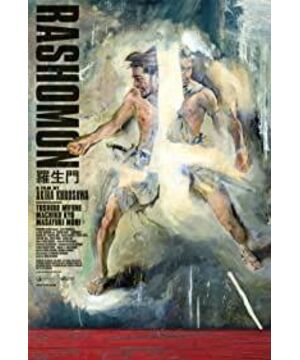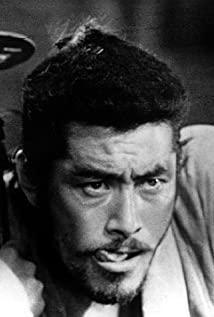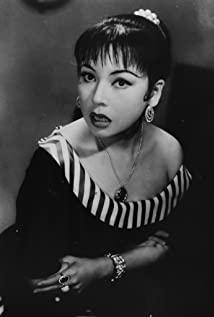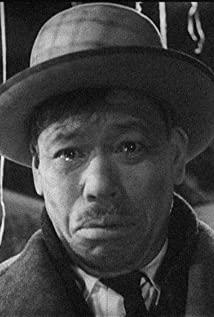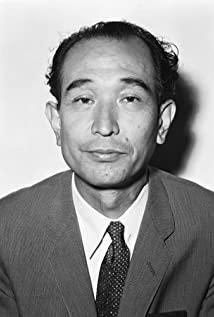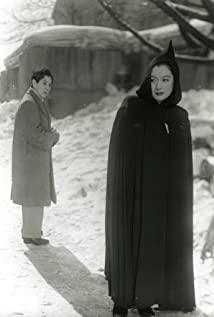Akutagawa saw nothingness in people's hypocrisy and lies, so he turned and threw himself into death; Akira Kurosawa still believed in the kindness of people from the darkness of the world, so he gave hope for life and future.
The film is based on two novels by Akutagawa Ryunosuke. "Rashomon" renders an atmosphere of a cruel world without morality with a destructive brushwork . Selfishness becomes the guide of human behavior, and human beings themselves become the root of evil. There are only evil and greater evils in the world to stop evil. An oppressive and dark chaos swallows up the world; "In the Bamboo Forest" maintains a first-person narration by moving the perspective, absurdly highlighting the contradictions of subjective facts , and by retelling a murder case, the contradiction is left to the reader. An absolute bystander, this kind of narrative exposes the self-limitation of the subjective perspective, and the novel is filled with doubled satire. A unsolved case without the truth directly shows Akutagawa's despair for the profound ills of human beings. The truth does not exist, making truth-seeking meaningless.
In the hands of Akira Kurosawa, a new character appears in the film - the beggar, a bystander in this farce. The audience's perspective is placed on the beggar. The beggar is the symbol of nihilism and the representative of the world in troubled times . He has nothing, and he can live by it. Just like the chaos, those who have morals die, those who turn their backs on morality live on the sidelines, and the vicious competition and transformation of the world make everyone have to become nihilists and egoists, and survival becomes the indicator of all behaviors, with an extreme absolute. He looks at this desolate world rationally, so he is also the one who can see the "truth" —that is, the truth of nothingness the most clearly—in this farce .
The audience's perspective is given to this transcendent perspective , and a beggar becomes the closest to the so-called truth or even the truth, so that Akira Kurosawa or Akutagawa has denied the author's omniscient perspective to reflect the objectivity of his subjective perspective. At the end, when the beggar peeled off the baby's clothes, his sharp words directly denied the woodcutter's hypocritical form of egoism, suppressed the woodcutter and foot monk's right to speak with absolute force, and finally left Luo with interests. Shengmen, laughed and left in the heavy rain.
The definition of the foot-traveler and the woodcutter in the original work is similar. They provide Akutagawa with a "mouth" to explain the basis of objective facts, and they also have the effect of defamiliarizing the language of the novel—that is, increasing the level of confusion in the story itself. Akira Kurosawa changed the positioning of the two. The foot monk is endowed with a kind of humanitarian concern , and at the same time symbolizes the Buddhist culture in Japanese culture. Enduring pain and sympathy for the world, the foot monk's perspective is full of a powerless humanistic Caring, he is good at discovering beauty, but allows beauty to wither in hypocrisy and meaninglessness. His belief collapses and he loses the ability to stop "evil" from despair in the world. Not worth mentioning.
As for samurai, women and robbers, each represents a part of Japan's complex spiritual culture. From the perspective of self, the cheap and despicable self-belief is regarded as the truth and the way of viewing the world. The overall unreliable narrative is generated from the components of the narrative body. special relationship between them . This relationship is manifested through a "retelling" of the same story (that is, the "critical situation" faced by each character), or multiple inner-focused narratives .
In addition, the four main narrative passages of the woodcutter all adopt the perspective of a specific narrator, and the holder of this perspective narrates his own experience. Each narrative is saturated with lies, prejudices, and illusions, both intentional and unintentional by the focused characters. Because of the apparent inconsistency between the four narratives, it is almost impossible to use them to reconstruct a unified truth, which prompts the audience to turn their attention to the narrative itself rather than to the story being told, which is constrained by the self-limitation of the narrator. Dramatized.
The adaptation of the woodcutter is Kurosawa's boldest and most unique feature. The woodcutter provides a narrative perspective that does not exist in the original work, and I think it is meaningless to explore the authenticity of this new perspective. The woodcutter also Unconsciously mixed with self-consciousness and subjective assumptions, the absolute objective truth is covered up or simply cannot be seen. His status is lowered in the story and mixed into the farce.
At the end, Akira Kurosawa turned the audience's perspective to the woodcutter, and finally criticized the numbness and ruthlessness of the nihilist like a beggar through the mouth of the woodcutter, but was ruthlessly dismissed, which also implied Kurosawa Akira's confusion and struggle , The concept of good and evil has no place in the face of absolute egoism. He exaggerated Kurosawa Akira's doubts about man himself through the helplessness of the woodcutter, and gave the audience this kind of questioning through the perspective of the woodcutter. However, Akira Kurosawa is different from Akutagawa in that he still joined the plot of a woodcutter adopting a baby, adding the last warmth to this desolate world. He chose to believe in ethical values in this kind of doubt and questioning.
The woodcutter finally chose to use this kind of self-sacrifice to resist nothingness in the absurdity. Akira Kurosawa chose a rotten expression method - the rain and the sky were sunny to express the hope for the future, affirming the possibility of existence. At the end, the woodcutter holds the baby and goes to the opposite side of the beggar. It also symbolizes that the two will eventually represent two different directions and go to different possibilities. Behind all this, behind all the contradictions, doubts and failures, I see The desolate gaze of the great artist is so deep, solemn, anxious and desperate, in front of such a gaze, no words are needed, because it has quietly penetrated the soul of the audience.
View more about Rashomon reviews


